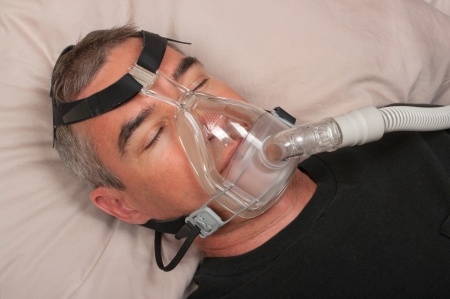 The severity of obstructive sleep apnea varies from patient to patient. Of the 12 million sufferers in the US, many will only experience mild problems, which may not require any treatment at all. However, for those who find that OSA has a negative impact on the quality of their lives, seeking medical assistance is likely to be the most practical solution.
The severity of obstructive sleep apnea varies from patient to patient. Of the 12 million sufferers in the US, many will only experience mild problems, which may not require any treatment at all. However, for those who find that OSA has a negative impact on the quality of their lives, seeking medical assistance is likely to be the most practical solution.
How Can You Tell If You Need Treatment?
The first step is to book an appointment with a qualified sleep apnea specialist. At your consultation, you’ll be asked a number of questions, in order to ascertain the severity of your obstructive sleep apnea.
You may also be asked to undertake a ‘sleep study’. This involves an overnight stay at a specialist clinic; where sleep specialists can monitor your breathing, heart rate and other symptoms whilst you sleep. Alternatively, you may be provided with a monitor to use at home, which will assess how often you cease breathing in the night, or experience reduced air flow to the lungs.
Treatment Available for Obstructive Sleep Apnea
If your sleep specialist feels that your OSA could be improved with treatment, there two main options available to you.
- Continuous positive airway pressure machine.
The continuous positive airway pressure machine (CPAP), involves the wearing of a mask during sleep. This mask then pushes air into the mouth and nose, to ensure that the airways are kept open.
There are different types of CPAP masks and devices. Some may be worn over the nose, whilst others cover both nose and mouth. The CPAP treatment is the most commonly used in the US, and is also the most well researched. It’s likely to be the first treatment that you’ll be recommended.
- Mandibular advancement device.
The mandibular advancement device (MAD) is a mouthpiece, which is worn whilst you are sleeping. Some are made from hard plastic, which are designed to cover both the upper and lower teeth. Certain devices also hold the tongue in position.
These mouthpieces are designed to keep the jaw forward and to keep the airway open. In order to wear a MAD, you’ll need to have a mold made of your mouth, to ensure a comfortable fit.
Which Treatment is Best?
Every patient is different, and a number of factors influence which treatment will be most successful for you. However, CPAP is generally considered slightly more effective at reducing the number of breathing pauses during sleep than MAD.
Most obstructive sleep apnea sufferers will need to use either the CPAP or MAD for the rest of their lives. In order to ascertain which is best for you, it’s important to arrange a consultation with a sleep apnea specialist.
Find Out More About Treating Your OSA
If you’d like to find out more about treating your obstructive sleep apnea, simply get in touch with the Blackstone Medical Services team at 888-710-2727.

